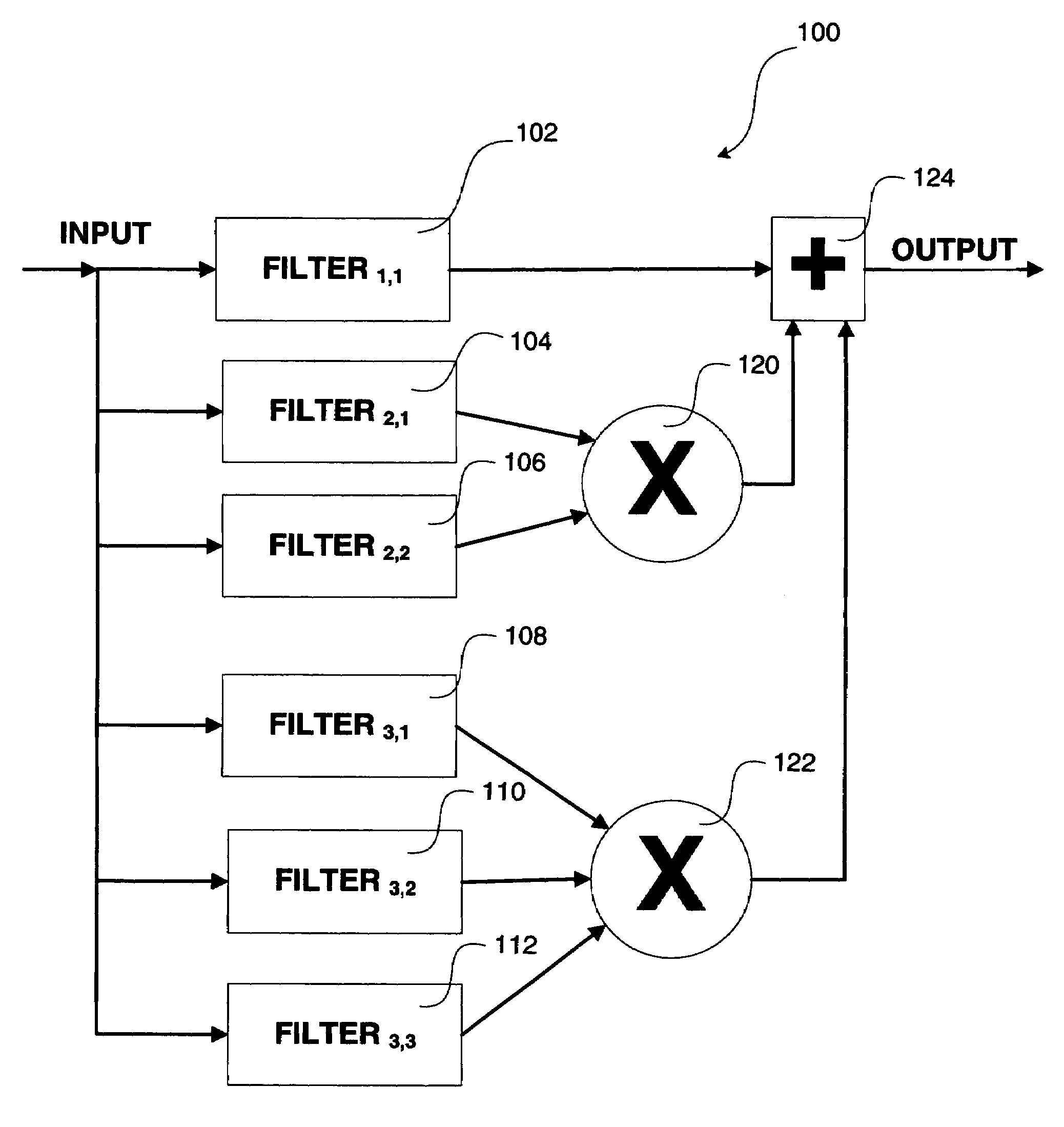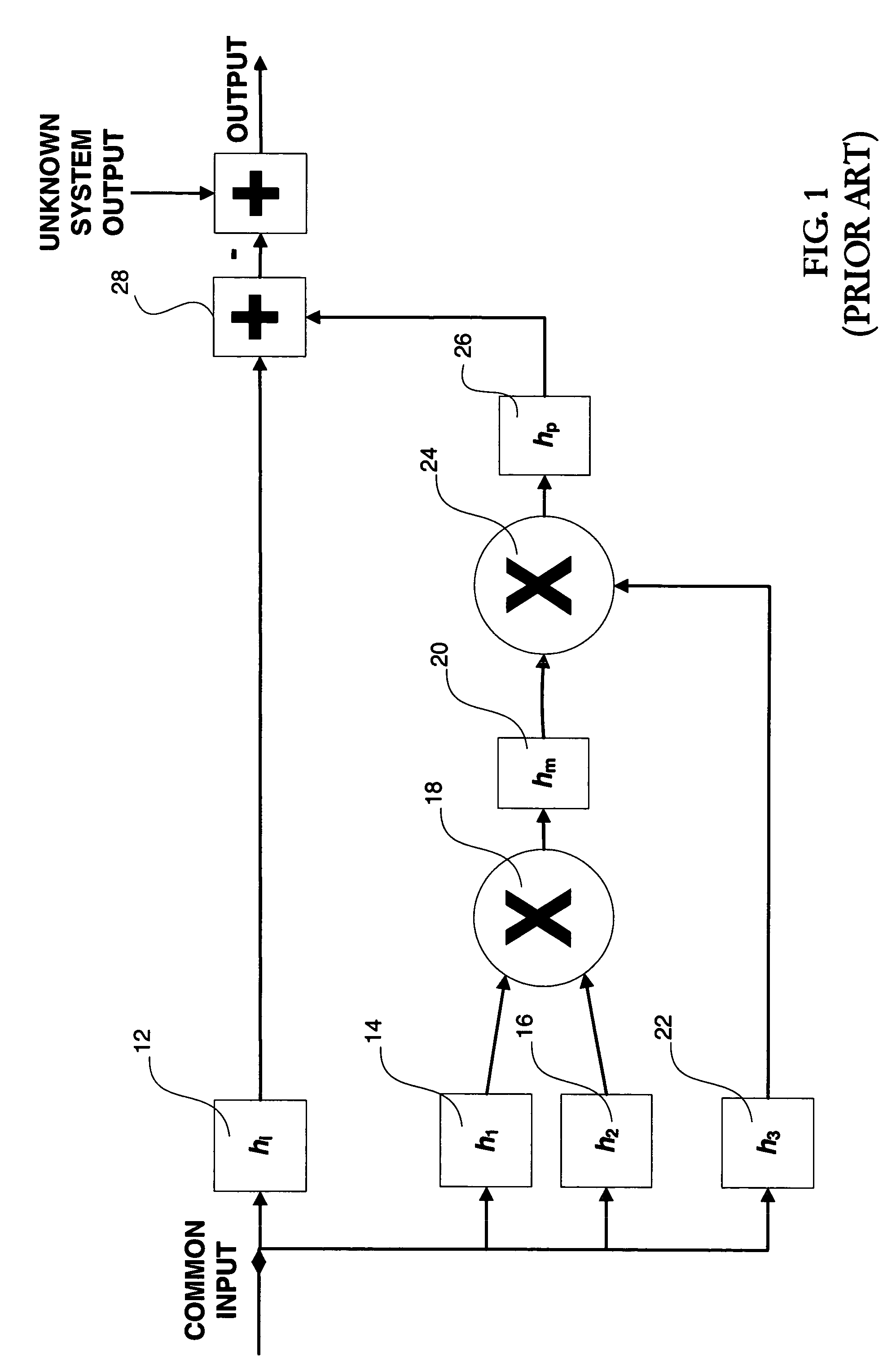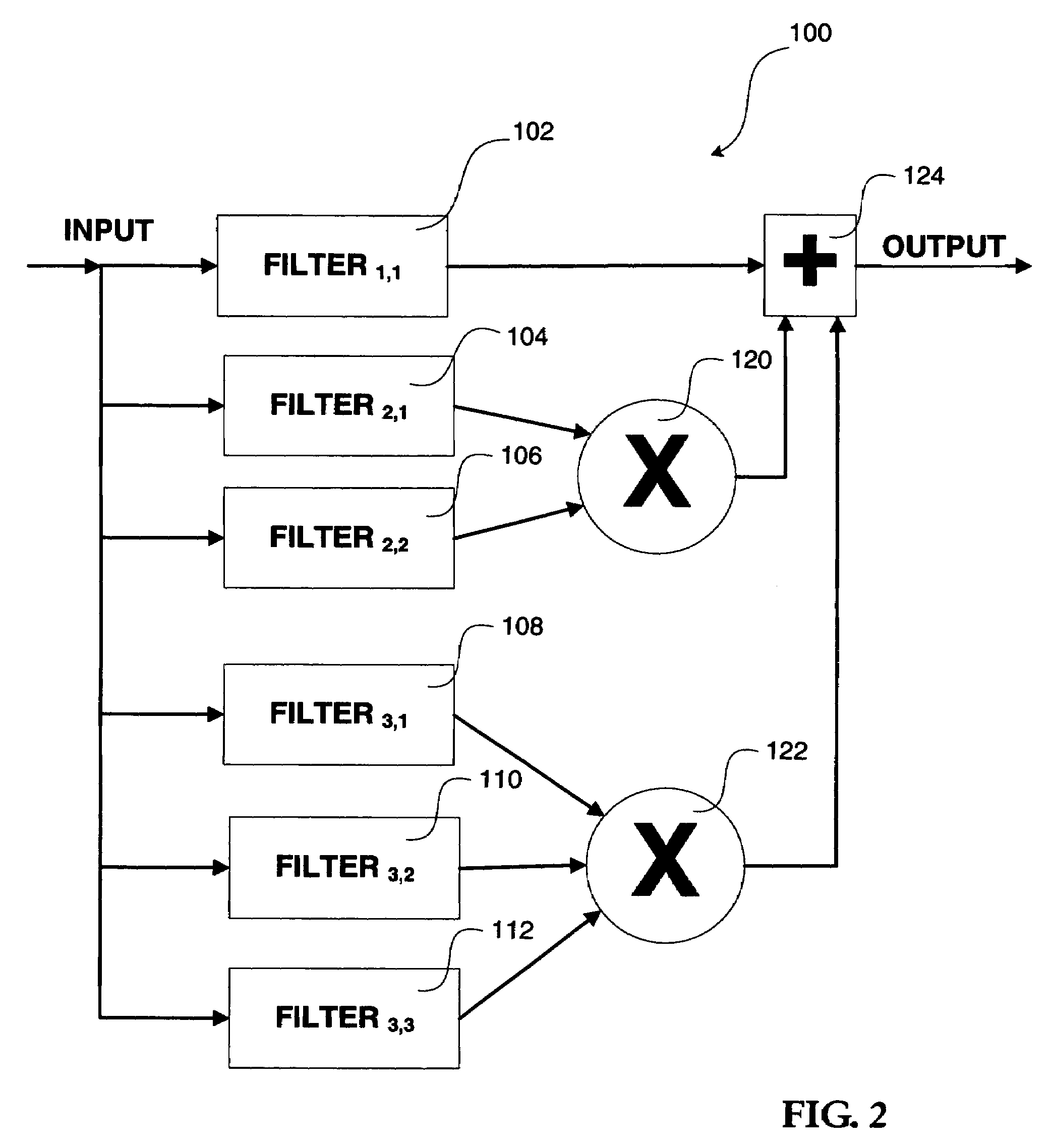Linearity corrector using filter products
a linearity correction and filter product technology, applied in the field of linearity error correction, can solve the problems of difficult to eliminate all sources of errors, circuit topologies have inherent distortion mechanisms that cannot be completely removed, and lower level distortions that are difficult to eliminate, so as to improve the spurious-free dynamic range ( sfdr ) of an adc, reduce or eliminate adc distortion, and simplify the design
- Summary
- Abstract
- Description
- Claims
- Application Information
AI Technical Summary
Benefits of technology
Problems solved by technology
Method used
Image
Examples
Embodiment Construction
[0021]As was mentioned above, previous proposed solutions have been based on Volterra filters. However, since Volterra filters would be very large and difficult to implement in connection with ADCs, a solution that will utilize a more manageable filter design, while still reducing some of the remaining dominant distortions, would be desirable. Taking the Volterra filter as a starting point, the generalized non-linear filter system can be defined mathematically as:
[0022]y(t)=h0+∑k=1n(∑j1=0N-1∑j2=0N-1…∑jk=0N-1hj1,j2,…,jk∑i=1kx(t-ji))(Eq.1)
where N is the impulse response length of the filter, and k is the filter order index.
[0023]For example, if n=3, then we have the sum of a DC value (h0), a linear FIR filter term at k=1, a 2nd-order distortion filter at k=2, and a 3rd-order filter at k=3. Accordingly, for n=3, the Volterra filter can be expressed as:
[0024]y(t)=h0+∑j1=0N-1hj1x(t-j1)+∑j1=0N-1∑j2=0N-1hj1,j2x(t-j1)x(t-j2)+∑j1=0N-1∑j2=0N-1∑j3=0N-1hj1,j2,j3x...
PUM
 Login to View More
Login to View More Abstract
Description
Claims
Application Information
 Login to View More
Login to View More - R&D
- Intellectual Property
- Life Sciences
- Materials
- Tech Scout
- Unparalleled Data Quality
- Higher Quality Content
- 60% Fewer Hallucinations
Browse by: Latest US Patents, China's latest patents, Technical Efficacy Thesaurus, Application Domain, Technology Topic, Popular Technical Reports.
© 2025 PatSnap. All rights reserved.Legal|Privacy policy|Modern Slavery Act Transparency Statement|Sitemap|About US| Contact US: help@patsnap.com



